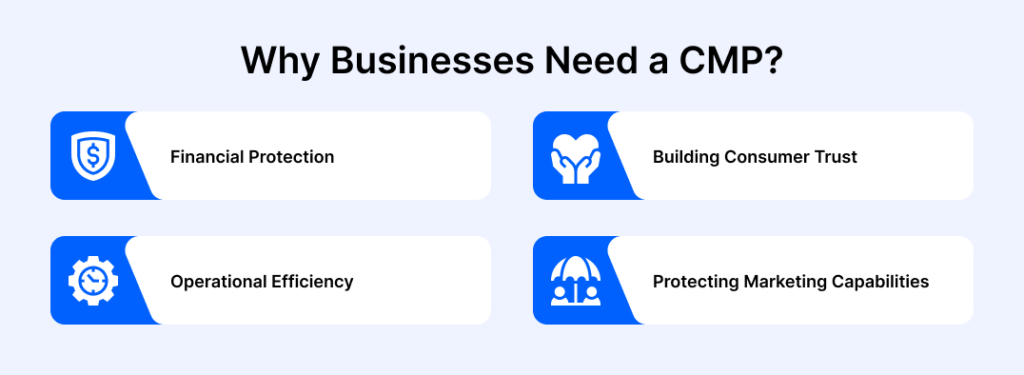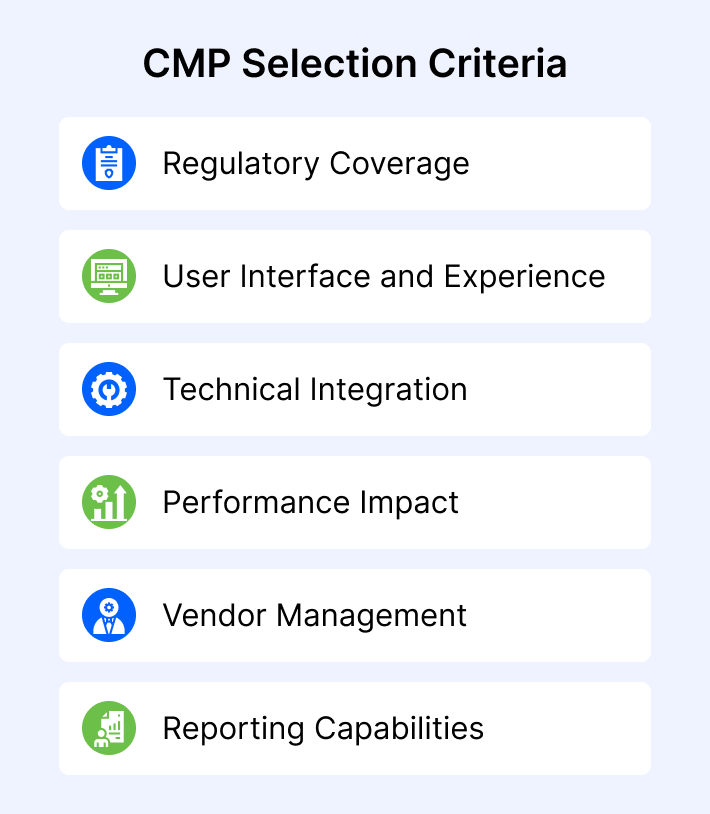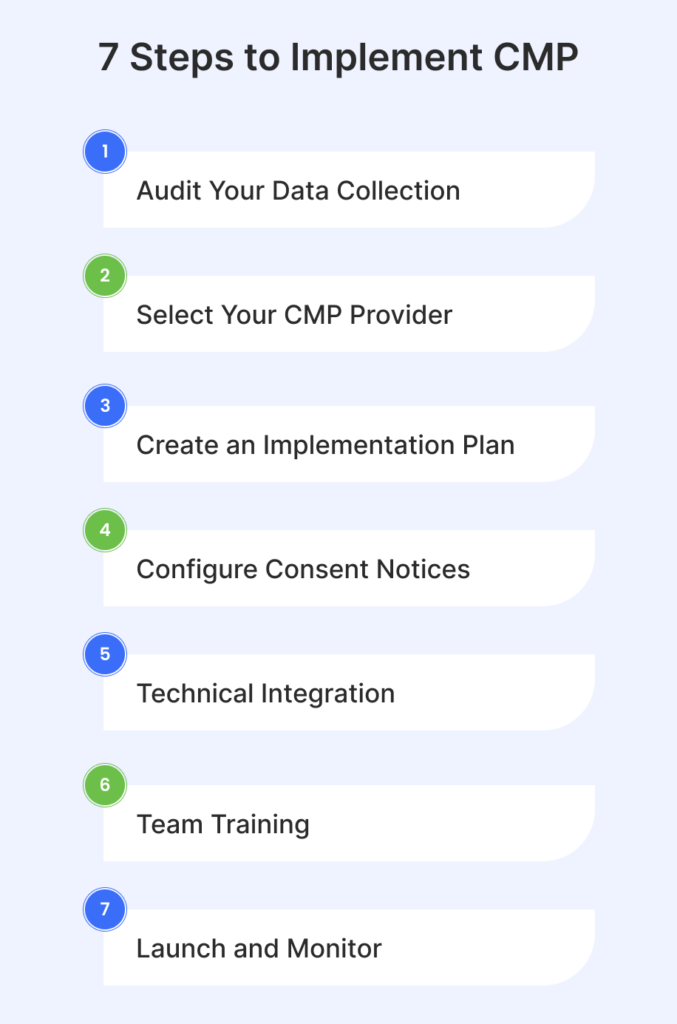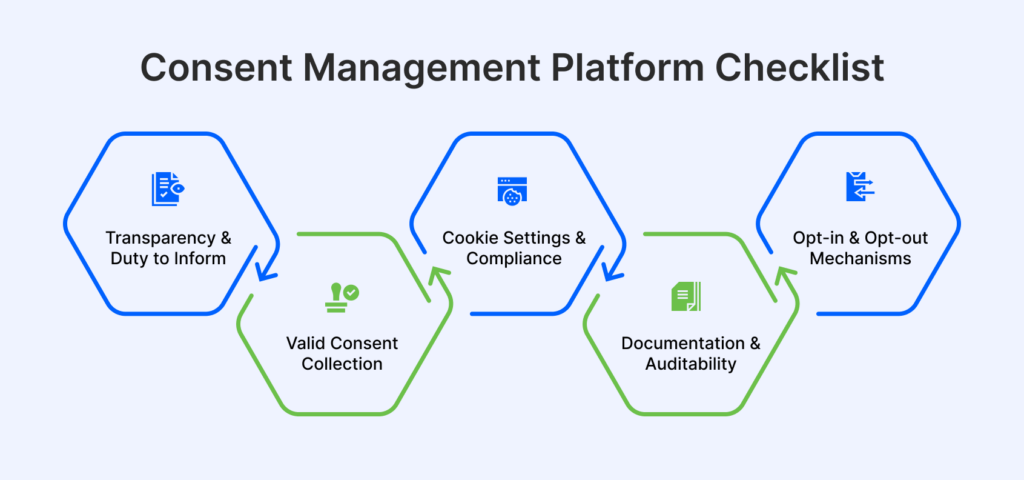Each visitor on your website is a goldmine of data. Without proper CMP implementation guide lines, you are either throwing it away or may later face heavy fines. Smart businesses turn compliance into profits. Are you one of them?
In this age, where privacy is a huge concern, no business can afford to lose customers and revenue from data infringement- that is why these Consent management platforms are used to comply with the data privacy regulations encompassing the GDPR, the CCPA, or LGPD.
The worldwide market for Consent Management Platforms was valued at USD 1.8 billion in the year 2024 and is expected to grow by 2.6 billion US dollars by 2030, at a CAGR of 6.1% from 2024 to 2030.
This guide will help you know how to choose and implement a CMP, enabling you to navigate the complicated universe of user consent management with more finesse and less grief. But first, let us clearly define what a CMP is.
On the online platform privacy and legality are safeguarded by the Consent Management Platform (CMP).
It ensures that businesses obtain, manage, and log user consent under worldwide data protection laws such as GDPR consent management, CCPA, and LGPD.
In simpler words, user consent management tools act as your compliance hub—they tell users about data collection, let them manage their choices, and keep detailed records to show you’re following the rules.
But it’s not just about meeting legal requirements. When you set up a CMP well, it helps build trust, makes things better for users, and boosts your brand’s reputation.
The CMP is not just a regulatory box-ticking exercise; it is becoming increasingly vital for business survival. These are the ways it protects your brand:

Privacy regulations like GDPR and CCPA have transformed how businesses handle consumer data. Without a proper CMP, you face serious risks.
First, the financial consequences can be severe. GDPR penalties reach up to €20 million or 4% of annual revenue. Recent research shows companies paid over $1.3 billion in privacy fines in 2023 alone. Even small businesses face penalties that could threaten their survival.
Second, today’s consumers care deeply about privacy. A PwC study found 85% of consumers won’t do business with companies they don’t trust with their data. When you implement proper consent management, you signal respect for user choices, building valuable trust.
Third, manual consent tracking is practically impossible at scale. Imagine trying to record and store every visitor’s preferences by hand, keep records updated, and prove compliance during an audit. The administrative burden would overwhelm most teams.
Finally, non-compliant data collection undermines your marketing efforts. Data collected without proper consent can’t legally be used for personalisation or targeting, limiting your ability to reach customers effectively.
The CMP implementation process addresses these challenges by automating compliance while maintaining marketing capabilities.
Effortlessly manage your cookie compliance. Seers.AI simplifies
the process, keeping you aligned with ever-changing regulations.
A CMP isn’t just a legal requirement, but a real strategic asset that delivers value to a business:

Adding a CMP to your digital properties delivers clear advantages for your business.
Privacy regulations constantly evolve across regions and jurisdictions. Your CMP automatically updates to address these changes, eliminating the need for continuous legal consultations and manual updates. This saves significant time and resources while reducing compliance risks.
A properly implemented CMP also enhances user experience. Instead of intrusive, confusing privacy notices, users see clear, branded consent options. Research by TrustArc shows websites with transparent privacy controls see 29% higher engagement rates. Users appreciate having control over their data.
Your marketing efforts benefit too. By collecting compliant consent, you maintain the ability to personalise experiences and target campaigns effectively. This protects your revenue streams while respecting privacy regulations.
For multinational businesses, CMPs offer centralised control over region-specific requirements. Your consent notices automatically adapt to visitor location, showing GDPR notices to European visitors and CCPA notices to Californians.
Perhaps most importantly, CMPs provide comprehensive documentation. Every consent choice is recorded with timestamps and preference details, creating an audit trail that proves compliance. This protection is invaluable during regulatory investigations.
Selecting the right CMP requires careful evaluation against specific criteria tailored to your business needs.

Start by assessing regulatory coverage. Your CMP must support all relevant privacy laws for your business locations and customer base. Beyond GDPR and CCPA, check for support of newer regulations like Virginia’s CDPA, Colorado’s CPA, and international laws like Brazil’s LGPD.
Next, evaluate the user interface. Since consent notices are often the first thing visitors see on your site, they must align with your brand and provide a smooth experience. Look for customisable designs, clear language options, and mobile-friendly layouts.
Technical integration capabilities are equally important. Your CMP should seamlessly connect with your:
Test the CMP’s performance impact too. Heavy scripts can slow page loading, affecting both user experience and search rankings. Request performance metrics and test on your own sites before committing.
Vendor management features are crucial as well. Your CMP should automatically scan for third-party cookies and trackers, categorise them appropriately, and control their activation based on user consent. This automation prevents unauthorised data collection.
Finally, assess reporting capabilities. Your CMP should provide clear dashboards showing consent rates, preference patterns, and detailed records for compliance documentation. These reports prove invaluable during audits or investigations.
When comparing providers, create a weighted scoring system based on your priorities—compliance capabilities might be worth 40% of your decision, while ease of implementation might be 20%.
Successfully implementing a CMP requires a structured approach. Follow these steps for optimal results.

Begin with a comprehensive data collection audit. Document every place your website or app collects personal information, from contact forms to analytics tools. Identify all cookies and trackers, reviewing your privacy policy to ensure it accurately reflects your practices. This foundation ensures your CMP covers all necessary consent requirements.
Select your CMP provider using the criteria outlined earlier. Request demonstrations from multiple vendors, focusing on how their solutions address your specific needs. Check references from businesses similar to yours, particularly those in regulated industries or with multinational operations.
Develop a detailed implementation plan with realistic timelines. Most CMP deployments take 2-4 weeks from selection to full operation. Identify key stakeholders from legal, marketing, IT, and leadership teams. Create a communication plan to keep everyone informed throughout the process.
Configure your consent notices carefully. Design user-friendly banners that match your brand style. Write clear descriptions for each consent category (necessary, functional, analytics, advertising) using simple language an eighth-grader could understand. Test notices on all device types to ensure visibility and functionality.
The technical integration phase connects your CMP to your technology stack. Work with your development team or CMP provider to:
Train your team on the new system. Ensure marketing staff understand how consent affects their campaigns, and IT teams know how to maintain the implementation. Create documentation for future reference and assign clear ownership for ongoing management.
After launch, monitor performance closely. Track consent rates weekly, noting patterns across regions or device types. Test different messaging approaches to optimise opt-in rates without being manipulative. Adjust your implementation based on user feedback and performance data.
To ensure your Consent Management Platform (CMP) meets compliance requirements and delivers a seamless user experience, go through this checklist:

AI-driven, server-side, and regulation-adaptive solutions—and Seers—are the way of the future for consent management is setting the standard. In addition to meeting compliance obligations, companies that adopt these technologies will increase efficiency, trust, and the effectiveness of their data strategy over the long run.
Among the various user consent management tools available, Seers.AI offers a comprehensive approach worth considering.
Their platform combines AI-powered compliance updates with user-friendly interfaces, making it particularly suitable for businesses without dedicated privacy teams. The system automatically adapts to regulatory changes, reducing the maintenance burden on your team.
Seers.AI provides geo-targeted consent options that display appropriate notices based on visitor location. This optimisation ensures compliance across regions while maximising consent rates through localised approaches.
The platform offers quick implementation, typically completing within 3-5 days according to their case studies. This efficiency minimises disruption to your operations while accelerating compliance.
Additional features include customisable branding options, real-time compliance monitoring, and detailed reporting dashboards. These capabilities make Seers.AI worth evaluating when selecting privacy management tools for your business.
It starts working the moment you add it to your website. Start Free Today
Implementing a CMP is no longer optional in today’s privacy-focused digital world. This CMP implementation guide provides the roadmap you need to protect your business while building customer trust.
The right approach transforms privacy compliance from a burden into a competitive advantage. When you respect user choices and demonstrate transparency, you build stronger customer relationships while avoiding potentially devastating fines and reputation damage.
Begin your implementation journey with these actionable steps:
With proper CMP implementation, you’ll protect your business, respect user privacy, and turn regulatory requirements into a foundation for customer trust and competitive advantage.
Want a CMP implementation guide that works for your business? Start with a platform designed for both compliance and profitability.
 Rimsha Zafar
Rimsha ZafarRimsha is a Senior Content Writer at Seers AI with over 5 years of experience in advanced technologies and AI-driven tools. Her expertise as a research analyst shapes clear, thoughtful insights into responsible data use, trust, and future-facing technologies.


United Kingdom
24 Holborn Viaduct
London, EC1A 2BN
Get our monthly newsletter with insightful blogs and industry news
By clicking “Subcribe” I agree Terms and Conditions

Seers Group © 2025 All Rights Reserved
Terms of use | Privacy policy | Cookie Policy | Sitemap | Do Not Sell or Share My Personal Information.